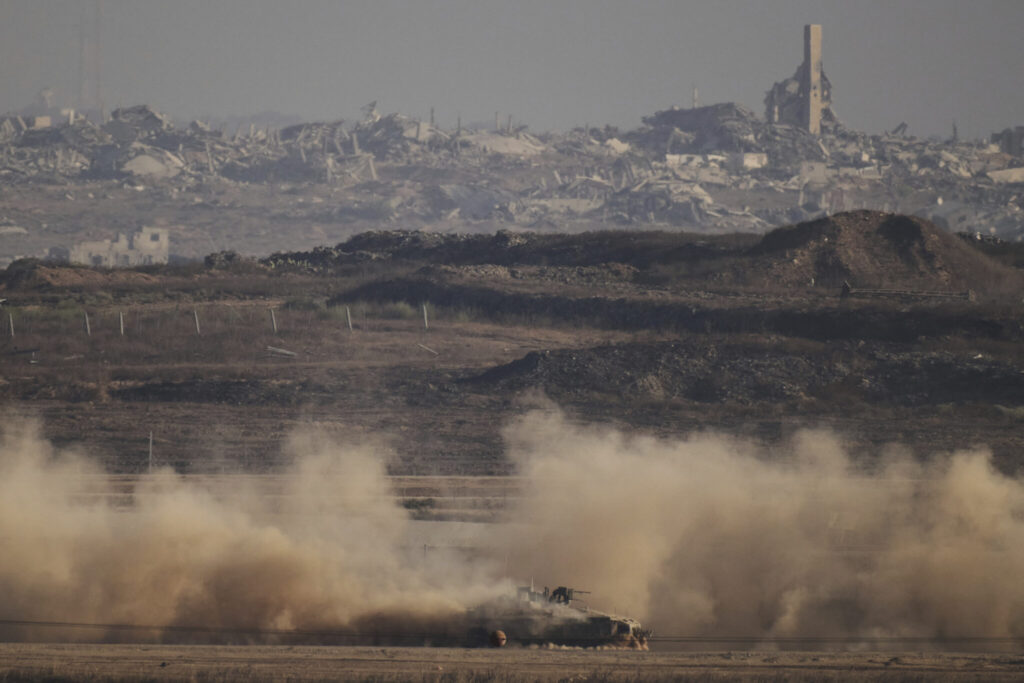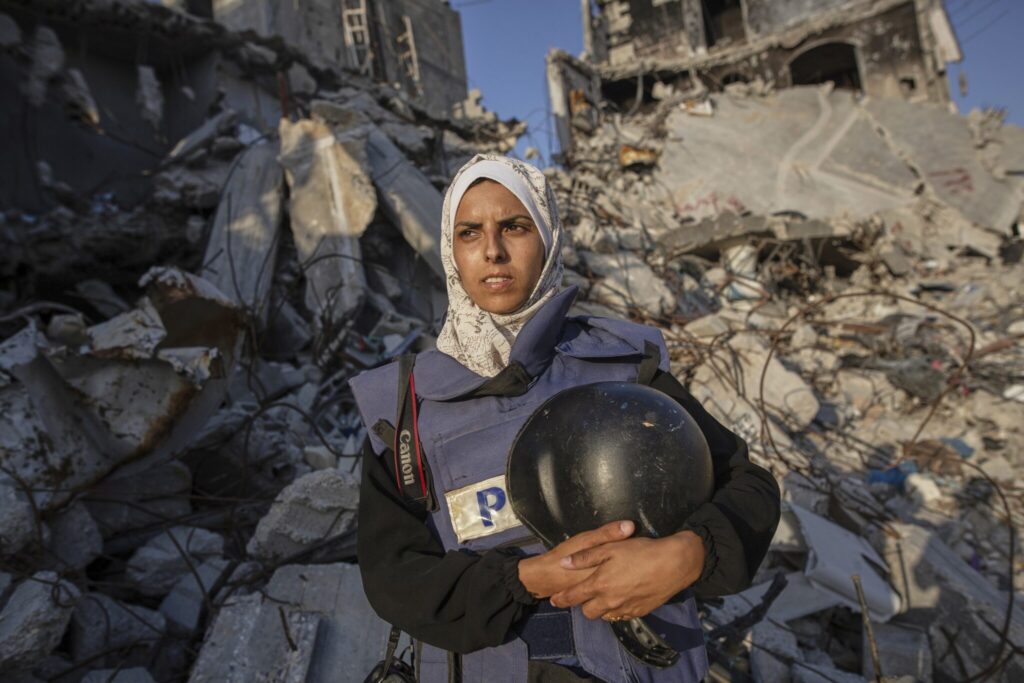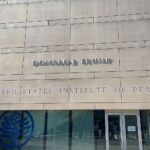Israeli Strikes on Gaza Hospital Kill 5 Journalists Among 20 Others/ Newslooks/ WASHINGTON/ J. Mansour/ Morning Edition/ An Israeli airstrike on Nasser Hospital in Khan Younis killed Five journalists, including AP freelancer Mariam Dagga. The incident highlights the extreme risks journalists face covering the Gaza conflict. Israel says it will investigate, but press freedom groups express alarm over the scale of journalist casualties.

Gaza Hospital Strike and Journalist Deaths: Quick Looks
- Five journalists killed in Israeli strike on Nasser Hospital.
- Among them was Mariam Dagga, a freelancer for AP and others.
- Nineteen total deaths were reported from the hospital strike.
- Gaza Health Ministry confirmed the death toll and journalist identities.
- AP, Al Jazeera, and Reuters journalists were among the victims.
- The Israeli military said it would investigate the incident.
- Israel claims it does not target journalists deliberately.
- 192 journalists have died in Gaza during the 22-month war.
- International media still barred from Gaza by Israeli authorities.
- Journalists in Gaza face deadly risks and food shortages.
- Press freedom groups condemn the high toll and lack of access.
Israeli Strikes on Gaza Hospital Kill 4 Journalists Among 20 Others
Deep Look
DEIR AL-BALAH, Gaza Strip (AP) — A deadly Israeli airstrike on Nasser Hospital in Khan Younis, southern Gaza, killed five journalists on Monday, including 33-year-old Mariam Dagga, a visual journalist who had been freelancing for The Associated Press and other media outlets. Health officials confirmed that a total of 20 people died in the attack.
The strike is another grim chapter in what has become one of the deadliest conflicts for journalists in modern times. According to the Committee to Protect Journalists (CPJ), at least 192 media workers have been killed in Gaza since the war began nearly two years ago. In comparison, 18 journalists have been killed during Russia’s invasion of Ukraine.
Dagga, a mother of one, had frequently reported from Nasser Hospital throughout the conflict. Her son, 13, had been evacuated from Gaza earlier in the war. Known for her emotionally charged reporting and photography, Dagga was most recently covering the hospital’s efforts to treat malnourished children. Independent Arabia also confirmed her work with their newsroom.
The AP released a statement mourning her death: “We are doing everything we can to keep our journalists in Gaza safe as they continue to provide crucial eyewitness reporting in difficult and dangerous conditions.”
Al Jazeera confirmed that journalist Mohammed Salama was also among those who were killed in the Nasser strike. Reuters reported that its contractor cameraman Hussam al-Masri and Moaz Abu Taha, a freelancer who worked occasionally for the organization, were killed. The agency’s contractor photographer Hatem Khaled was wounded.
Ahmad Abu Aziz was also killed, according to Health Ministry official al-Waheidi. He had worked as a freelancer for Middle East Eye, a U.K.-based media outlet, the organization said.
The Israeli military acknowledged conducting an operation in the area and announced an investigation into the circumstances.
A military spokesperson stated, “The IDF regrets any harm to uninvolved individuals and does not target journalists as such.”
Despite this statement, international watchdogs are increasingly concerned. Thibaut Bruttin, Director General of Reporters Without Borders, called the situation a historic setback for press freedom.
“They are doing everything they can to silence independent voices that are trying to report on Gaza,” he said.
Israel has previously accused some journalists of militant affiliations. Earlier this month, Al Jazeera correspondent Anas al-Sharif was killed in a targeted strike. The Israeli military claimed he led a Hamas cell — a charge denied by Al Jazeera and by al-Sharif himself before his death.
Amid the conflict, Israel has imposed a near-total ban on international press entering Gaza, aside from rare guided tours. As a result, media organizations rely heavily on Palestinian journalists and citizen reporters for coverage. Israel has often questioned the credibility or affiliations of these local journalists but has not provided foreign alternatives.
The toll on Gaza’s journalists extends beyond direct violence. Like the rest of the civilian population, they struggle to secure basic necessities like food and shelter. They are often reporting on destruction while living it.
In one of her final social media posts, shared just a day before her death, Mariam Dagga posted a selfie — a haunting reminder of the human faces behind the news from Gaza.
As international attention continues to focus on the war, the growing list of slain journalists calls into question not only the safety of media personnel in conflict zones but also the ability of the global community to ensure press freedom amid war.







